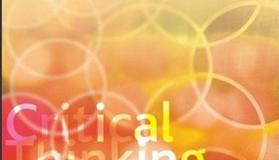Skill 11: Comparing Summative conclusionswith Logical Conclusions
Summative conclusions
Summative conclusions are simply conclusions that draw together previousinformation into a shorter overall summary.
Example:
It used to be assumed that stomach ulcers occurredas a result of stress. People who worked too hard or worried too much wereassumed to produce excess stomach acid which would, in turn, cause ulcers. Manystill hold this view. On the other hand, research has indicated that 70 percentof stomach ulcers could be caused by bacterium H. Pylori, which changes thestomach lining so that it is more vulnerable to the effects of stomach acid.This bacterial infection can be treated with antibiotics, rather than forcingthe patient to reduce his or her stress levels. Hence, whilst some believe thatstomach ulcers are caused by stress, others now believe that they are caused byinfection.
Logical conclusions
A logicalconclusion is a deduction based on reasons. It is more than simply a summary ofthe arguments or the evidence. It will include one or more judgments, drawnfrom an analysis of the reasons given.
Example:
Predicting volcano eruption is not an exactscience. Monitoring summit activity often cannot help us predict flank activitysuch as eruptions down the sides of the volcano. Scientists monitoring MountEtna in Sicily thought they had established a link whereby such flank activitywas preceded by summit activity for a period of a few months. However, in 1995summit activity began but there was not a flank eruption for a further sixyears. They decided Etna’s eruptive cycle was more complicated than they hadfirst thought in terms of the relationship between summit and flank activity.This may be true of other volcanoes too. Consequently, a period of summitactivity cannot necessarily be used as a predictor for flank activity.
Activity: Identify whether the conclusionsin the passages below are summative or logical conclusions.
Passage1:
In the 1960s, Jacobs suggested a strong geneticcomponent in criminal behavior. On the other hand, the psychologist Bowlbyargued that criminal behavior is caused by upbringing rather than genetics andnoted that a significant number of criminals grew up in families where theyexperienced abuse or a lack of emotional warmth. More recently, Wilson andHernstein suggested that a person is more likely to commit a crime if they havegenes that predispose them towards criminality as well as facing additionalstressors such as childhood abuse or substance misuse in adulthood. Althoughgenes may predispose people towards crime, this is not a cause. As manycriminals have experienced abuse and childhood neglect, it is fairer to arguethat crime is the result of environment rather than genes, and that criminalsare “made” rather than “born”.
Passage2:
In recent years the number of “reality” shows ontelevision has grown substantially. They are cheap to make and producers arguethat viewers want to see “real people” on their screens. However, criticscomplain that reality shows are made at the expense of original drama orcurrent affairs programmers and that the overall quality of television is beingreduced. Consequently, some people argue that reality shows are good for TVbecause they are cheap and popular whilst others argue that they result in poorquality television.
Passage3:
Supporters of organic produce argue that as well asbeing healthier than commercially produced food, it tastes better. Fillion andArazi (2002) carried out blind tastings of organic and non-organic juices andmilk with trained panelists. They concluded that although organic juice tastedbetter there were no taste distinctions between organic and conventional milk.However, supporters of organic produce maintain that it is “common sense” thatorganic food tastes better as it has been produced under healthier conditions.Hence, although scientific support for organic produce tasting better islimited, consumers who choose organic are convinced it does.


